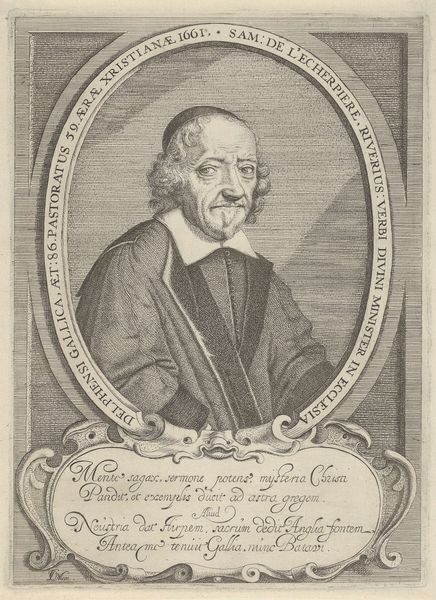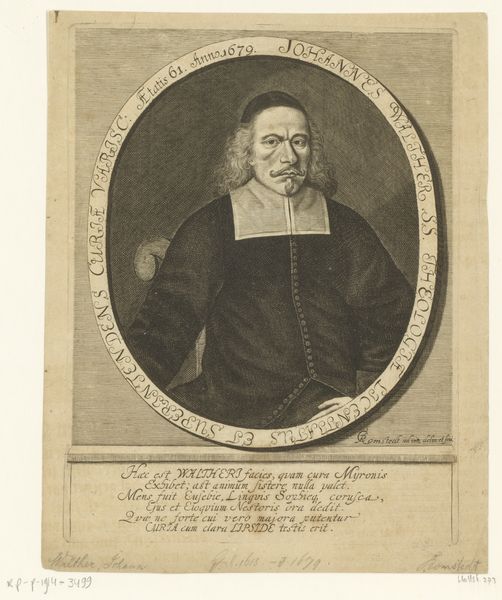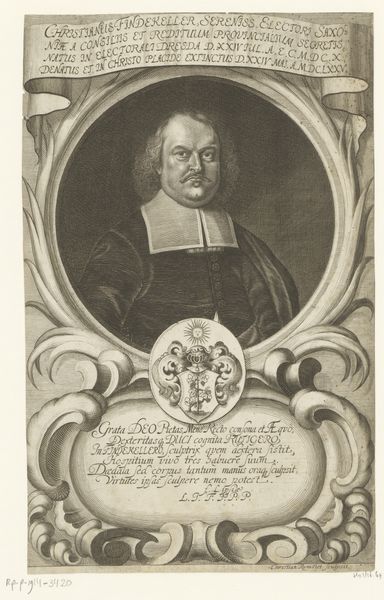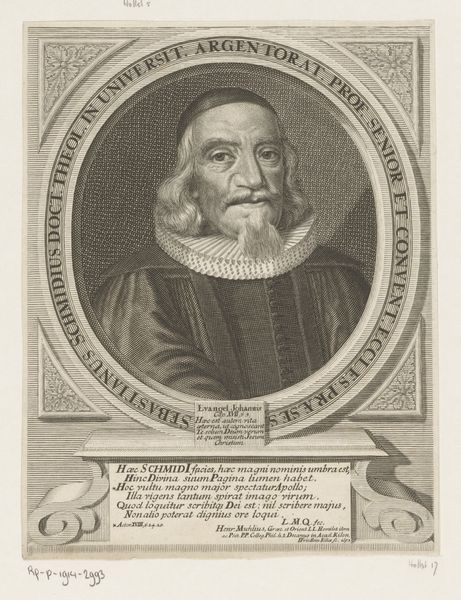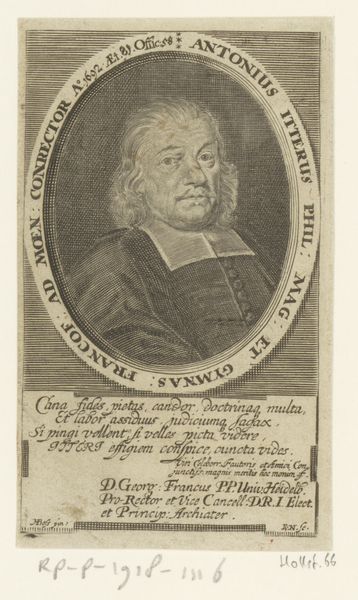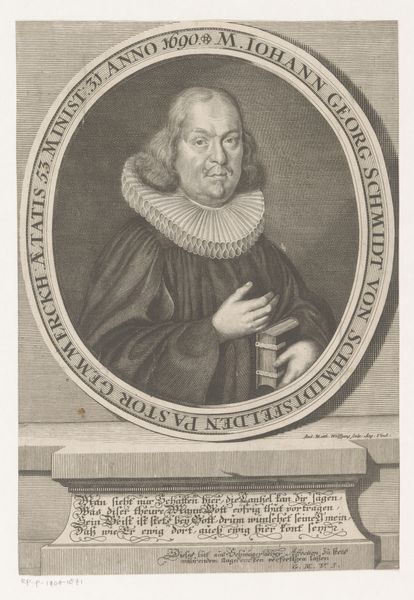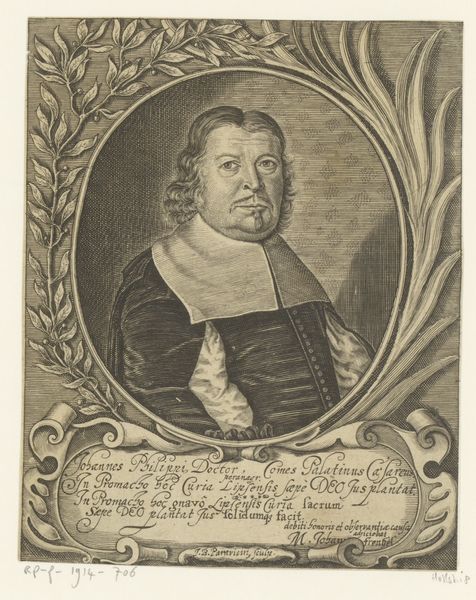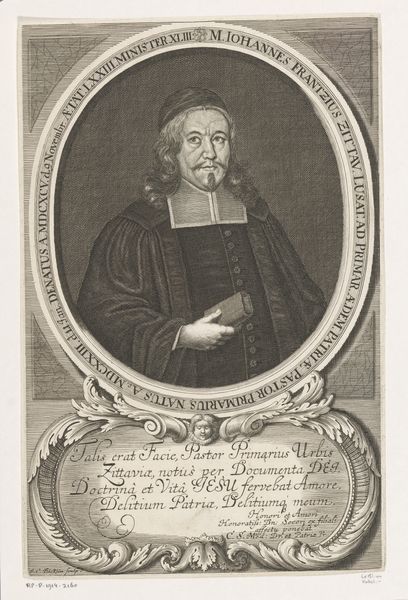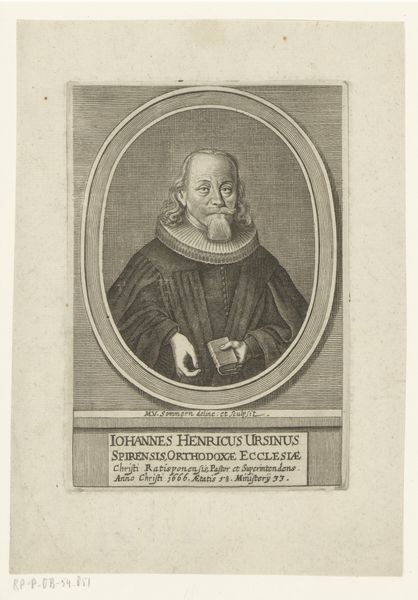
print, engraving
#
portrait
#
baroque
# print
#
old engraving style
#
history-painting
#
academic-art
#
engraving
Dimensions: height 171 mm, width 116 mm
Copyright: Rijks Museum: Open Domain
Johann Friedrich Fleischberger created this portrait of Michael Dürr in the mid-17th century using engraving. This printmaking technique involves meticulously cutting lines into a metal plate, which are then filled with ink and transferred to paper. The material quality of this engraving is defined by the crisp, precise lines achieved through the burin's incision into the metal. Look closely, and you can see how these lines create areas of shadow and light, defining Dürr's features and clothing. The process is labor-intensive, demanding skilled hands and precise control. Each line represents a deliberate decision, a testament to the engraver's artistry. Engravings like this played a vital role in disseminating images and information during this period. This portrait of Michael Dürr serves not only as a representation of an individual but also as an example of the power of printmaking in shaping social and cultural values. It reminds us that art is deeply embedded in broader networks of labor, skill, and cultural production.
Comments
No comments
Be the first to comment and join the conversation on the ultimate creative platform.
